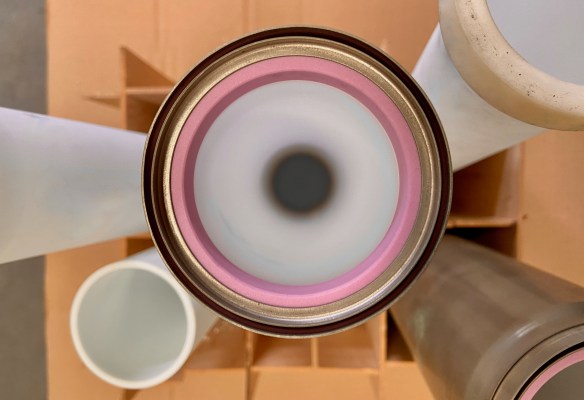It’s not every day that a 50-year-old technology that was long since passed over gets a new lease on life.
Sodium-metal-halide batteries were first patented in the mid-1970s. The design showed promise: It was energy dense and cheap to make. Mercedes-Benz took an interest, investing heavily in research and development. The automaker even tested them in a handful of compact sedans, running tens of thousands of miles per year. In the 1980s, they were the hot chemistry — literally, too, since the cells have to be kept well past the boiling point of water in order to work.
But while automakers were curious about electric vehicles at the time, they weren’t committed. Meanwhile, the lithium-ion battery caught the attention of the electronics industry, which put the fledgling chemistry through its paces to the point where automakers started seriously considering it for a fresh crop of EVs. By that point, sodium-metal-halide batteries were all but forgotten.
Then Antonio Baclig took an interest. A recent doctorate graduate from Stanford, he was looking to start a grid-scale storage company to augment the explosive growth that wind and solar power experienced over the past decade. Baclig was particularly interested in batteries that relied on sodium instead of lithium because sodium is far cheaper to come by. Soon, he zeroed in on sodium metal halide.
With some tweaks, Baclig realized he could make cells even cheaper than existing designs while still maintaining the basic chemistry’s longevity and energy density. In 2021, he was accepted to the Activate Fellowship, founded Inlyte Energy, and started digging deeper.
“Along the way, as I was really trying to understand what happened in the industry around sodium-metal-halide batteries — why has it not grown beyond a niche battery technology? — I got in touch and connected with these people in the U.K. called Beta Research, which had been involved from the beginning, from the early 1980s. They were the ones that really developed that technology, and I didn’t know they were still around.”
The company was in a tight spot financially, and Baclig and the group reached a deal where Inlyte would acquire the team and its facilities and equipment following successful fundraising.
Needless to say, that round was successful. Inlyte closed an $8 million seed round, TechCrunch+ has exclusively learned. The round was led by At One Ventures with participation by First Spark Ventures, Valo Ventures, TechEnergy Ventures, Climate Capital, Anglo American and others.
Inlyte’s goal is to bring sodium-metal-halide batteries into the 21st century. To do so, the startup is focusing on iron. The Beta Research team had initially studied iron in the early 1980s but ultimately swapped it for nickel to boost energy density in an effort to attract automotive interest. Automakers did pay attention, but their commitment flagged.
The Beta Research team “felt they got iron to work pretty well, but they just hadn’t completed that, it hadn’t been optimized,” Baclig told TechCrunch+ about those early efforts. Recently, though, the combined team has made progress. “We’re definitely on a good track to optimize the iron.”
Inlyte believes its batteries, when produced at the gigafactory scale, could cost as little as $35 per kWh. That’s significantly less than lithium-ion batteries today and probably in the near future, too. Sodium-metal-halide batteries won’t challenge lithium-ion in the automotive space, but their combination of low cost, high efficiency (80% to 90%) and long life span make them ideal for the grid-scale energy storage market.
The batteries have to be kept at high temperatures in order to charge and discharge, which does sap some efficiency. But lithium-ion cells require a narrow thermal window, too, that requires either heating or cooling depending on the ambient temperature. In warmer climates where solar dominates, sodium-metal-halide gets a bit of a boost, relatively speaking.
The other place it gets a boost is its relatively long track record. Though Inlyte is tweaking the chemistry, the fundamentals have been largely the same for decades. They’re safe and long-lived, two things that utilities, Inlyte’s target market, appreciate. Plus, the Beta Research team helped design every sodium-metal-halide factory that’s been built over the last 40 years, experience that will undoubtedly be helpful when it’s time to scale up.
Inlyte is aiming to switch on its first factory in early 2027. For a battery startup, that’s a very compressed timeline. But Balcig and Inltye have shown that they’re not opposed to finding ways to shorten the path to market, even if it means thinking outside the usual startup box.
